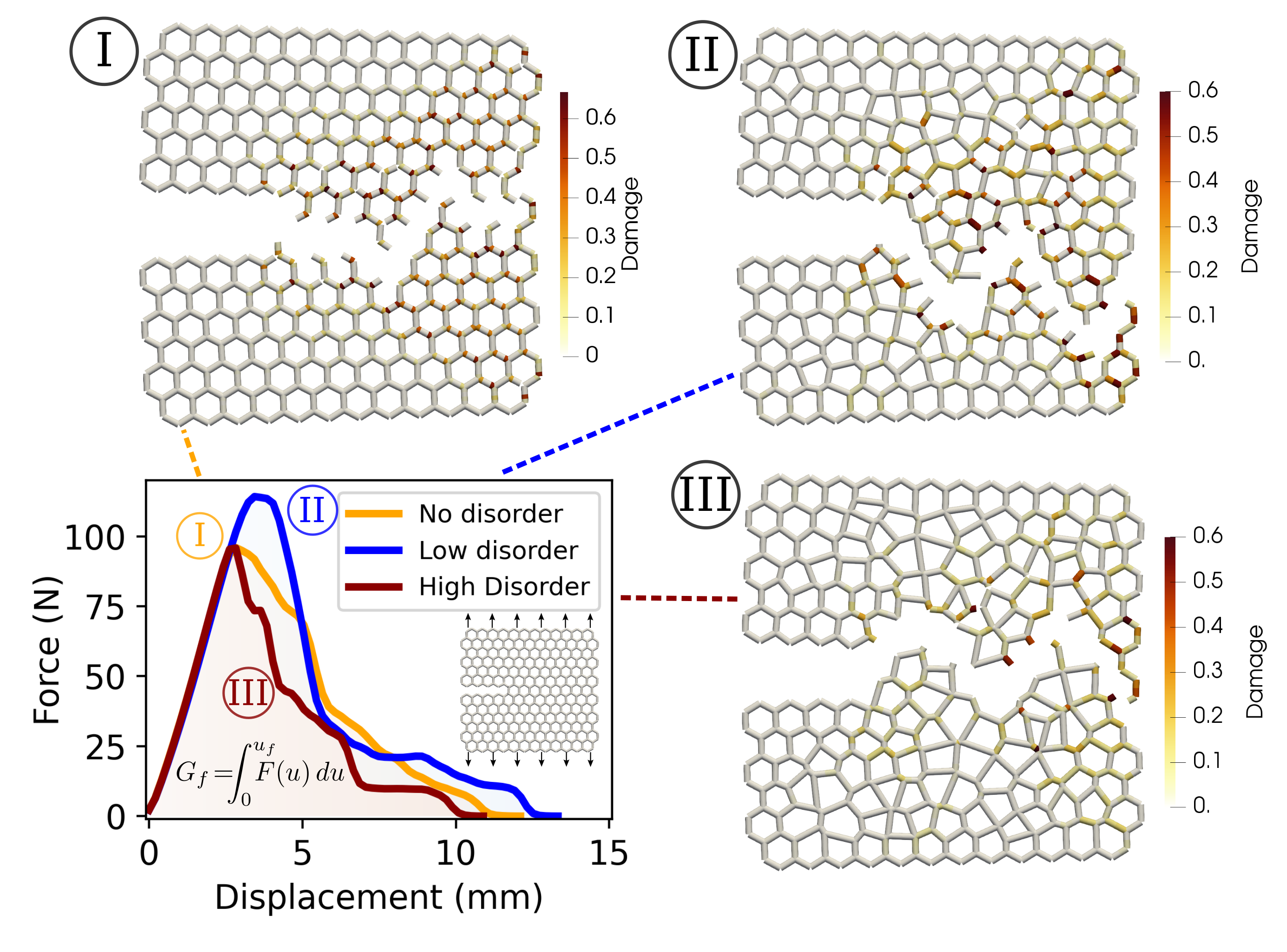Prediction and control of fracture paths in disordered architected materials using graph neural networks
 A class of irregular cellular materials with engineered topological and geometrical disorder is introduced, which represents a shift from conventional periodic lattice designs. We first develop a graph learning model for predicting the fracture path in these architected materials. The model employs a graph convolution for spatial message passing, and a gated recurrent unit architecture for temporal dependence. Once trained on data gleaned from experimentally validated elastoplastic beam finite element analyses, the learned model produces accurate predictions overcoming the need for expensive finite element calculations. We finally leverage the trained model in combination with a downstream optimization scheme to generate optimal architectures that maximize the crack path length and, hence, the associated fracture energy.
A class of irregular cellular materials with engineered topological and geometrical disorder is introduced, which represents a shift from conventional periodic lattice designs. We first develop a graph learning model for predicting the fracture path in these architected materials. The model employs a graph convolution for spatial message passing, and a gated recurrent unit architecture for temporal dependence. Once trained on data gleaned from experimentally validated elastoplastic beam finite element analyses, the learned model produces accurate predictions overcoming the need for expensive finite element calculations. We finally leverage the trained model in combination with a downstream optimization scheme to generate optimal architectures that maximize the crack path length and, hence, the associated fracture energy.  A class of irregular cellular materials with engineered topological and geometrical disorder is introduced, which represents a shift from conventional periodic lattice designs. We first develop a graph learning model for predicting the fracture path in these architected materials. The model employs a graph convolution for spatial message passing, and a gated recurrent unit architecture for temporal dependence. Once trained on data gleaned from experimentally validated elastoplastic beam finite element analyses, the learned model produces accurate predictions overcoming the need for expensive finite element calculations. We finally leverage the trained model in combination with a downstream optimization scheme to generate optimal architectures that maximize the crack path length and, hence, the associated fracture energy.
A class of irregular cellular materials with engineered topological and geometrical disorder is introduced, which represents a shift from conventional periodic lattice designs. We first develop a graph learning model for predicting the fracture path in these architected materials. The model employs a graph convolution for spatial message passing, and a gated recurrent unit architecture for temporal dependence. Once trained on data gleaned from experimentally validated elastoplastic beam finite element analyses, the learned model produces accurate predictions overcoming the need for expensive finite element calculations. We finally leverage the trained model in combination with a downstream optimization scheme to generate optimal architectures that maximize the crack path length and, hence, the associated fracture energy. 